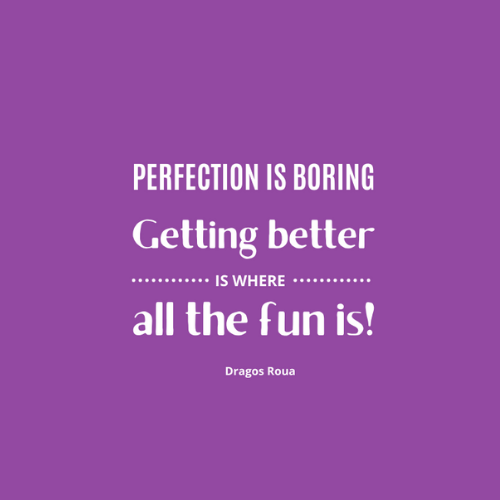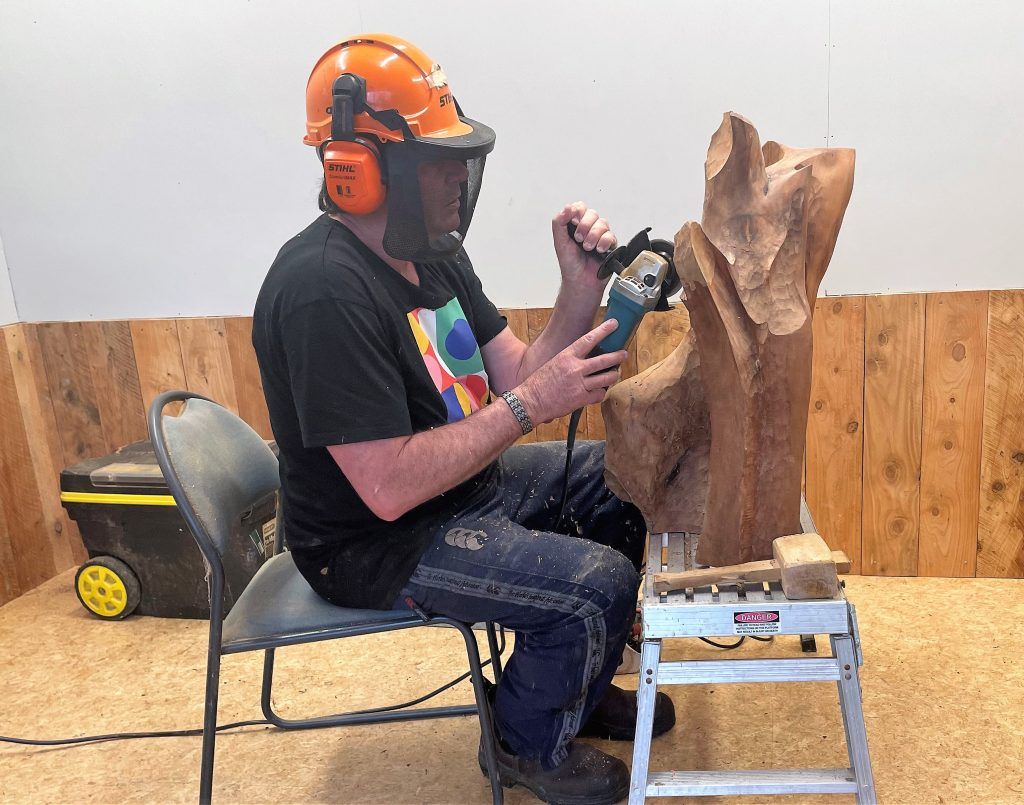Ph: 06 280 0938
What’s this perfection bullsh*t all about?

A personal topic
This is a very personal topic for me, as my poor mother Lois was a perfectionist and I saw first-hand the incredible harm it caused. I think Lois suffered from perfectionism as a trauma response to losing her own mother when she was 7 years old. Unfortunately, in that era she got no support to deal with the effects of her loss.
Or maybe the cause was something completely different, but the impact of intermittent perfectionism on her life was huge. I won’t go into details, as I will just come across a bit judgy, and bitter, as it was a major factor in my early life.
This blog topic is due to a prod from the team here at the office, particularly Bettina, who considers me the anti-perfection person. Not sure if this is a complement or not?
When Bettina started working at Collective Intelligence HQ, she had a background in science/research and subsequently consultancy, where being ‘right/perfect’ was highly valued. She then went to work in the museum industry, where she learnt many voices and ways of reaching an endpoint were the norm – but facts and ‘getting it just right’ were still very important.
So, it was a bit of a culture shock to come and work in an entrepreneurial company where minimum viable product is the standard. We had many conversations around, “that’s good enough to launch Bettina, so launch it”. It was a stretch as she wanted to get it just right, and I was saying, “launch and modify, or not. Make mistakes, tweak, then get onto the next thing.”
It was a stretch, but Bettina has definitely embraced the anti-perfection movement, although she jokes that she still clings to her perfectionism like a sinking ship.
Excellence vs perfectionism and the artistic process
The difference between excellence and perfection is huge. Excellence is just fine.
I have always enjoyed art. Looking at it, that is. My fine motor coordination (fingery things) is not great, and my drawing and painting at school was shite. The focus was to get it right, and so I just withdrew from art.
Years later I had the pleasure of watching a true artist in action. Her name was Val Joyce. She had magnificent, beautiful fingers. Val would create all types of garments for the Wearable Arts and other competitions around the country – often made from recycled materials.
Her greatest win that I remember, was a garment made from milk bottle tops and other paraphernalia. She laughed as the model wore it backwards on stage, such was the mystery of the outfit, and it won. Val then declared it looked better back-to-front.
Unfortunately, the photos of her Wearable Arts pieces are not great, but thanks to her daughter Kath Joyce-Kellaway we have a photo of one of her earlier garments, and one of Val herself looking rather glam:
I learnt the most from Val whilst watching her create art. I’d watch her throw a creation out mid-way with a smile saying, “that’s not very good”, and then start again and again. She was not trying to get it right, she was experimenting. She did it with her cooking too.
So, one day when I thought about picking up a chisel and chipping away at some wood in my shed, I started experimenting. Lo and behold I became a surprisingly reasonable sculptor over time. My fingers were still shite but my hands worked fine.
Without Val’s demonstration of non-perfect artistry, I would not have prevailed.
Val is the grandmother of my kids, and she died on August 24 whilst I was midway through writing this blog. I’m sorry she did not get to read this tribute, but she knew that we all loved her – that crazy artist woman!
That new beginning with wood started a whole chain of events for me, as sculpting was never in my DNA and didn’t make sense. I was a sporty, running around kid, not an artist (or so I thought). So, I wondered if I can sculpt, what else can I do that doesn’t make sense?

The prize of imperfection – what’s possible?
There’s this word ‘authenticity’ that’s bandied about. It’s almost a buzz word in some spaces – unfortunately.
What’s fascinating with authenticity as seen in people, is that it often doesn’t look that flash. Plus, authentic people seldom use the word to describe themselves. It’s just something they do naturally, and imperfectly.
Authenticity in people is not perfect in any way.
“Oh that baby – she’s perfect!” No. She is not perfect, and don’t start putting that label on her before she starts thinking that she needs to be perfect.
Sadly, there are kids today who are so hamstrung by parents who want to produce perfect beings, they have no idea that making mistakes is wonderful stuff. And feminism has taken a hit with all the pervasive pressures of being a perfect mother.
Oh, and social media is soooo helpful too in generating this perfection bullshit. One of my fondest ‘giggle memories’ was watching a ‘perfect’ young couple in a restaurant. I know, that’s creepy, but I couldn’t help it!
They were out for a romantic dinner – or that’s what the Instagram post would have read. What amused me was they didn’t know how to talk to each other, laugh, or possibly even fart! But every now and then, they would pose for a wonderful pouting selfie together, and she would tap furiously on her device and send off the most perfect image of the most perfect evening they were having.
I was choking trying not to make a scene. I thought, you poor buggers. They could be cool in a photo, but not in real life.
So, what’s this perfection nonsense all about?
It’s not good for us. Any of us.
Perfectionism creates:
- Doubts and concerns
- Less achievements
- Lower self-esteem
- Poorer health
- Less connection to others
Every time you pose as being perfect, you are harming yourself, and more importantly others.
I sought our Collective Intelligence facilitators’ views on perfectionism, and they shared this with me:
From Jon Lasenby:
“I think the Leadership Circle would hold that perfectionism is often an obstacle to leaders doing delegation well. I see the struggle with perfectionism and control crop up pretty much for every leader as they truly make the step in their development to let go of “fixing it” themselves or flying (sometimes literally) to the crisis.
I have often observed that this crops up for leaders quite early on in their careers i.e. as they make their first steps into management. I also notice that leaders who are quite senior, or who have been leading for a while, still have more levels of work to do to keep rebalancing their relationship with perfectionism…after all – it’s not wholly negative. We can’t decide to banish it forthwith, we need some of it. The ability to spot the places where it is getting too dominant seems to be an ongoing mission for a leader as they develop.”
From Sarah Tocker:
“I agree with Jon’s whakaaro. A little bit of perfectionism isn’t an issue, but if you don’t have any other tools at hand, and it’s the only one you deploy, especially from a position of leadership, it is of course deeply problematic.
I would also suggest that it reduces your ability to be courageous, because courage is often required when we can’t predict or know how a thing will turn out. This means you’re stuck in a loop of needing to know the unknowable which = heightened stress = inaction = exhaustion = lonely = and eventually alone in your leadership.”
From Manda Jane Johnson:
“Perfectionism by nature is a means of attempting to control the outcome. This is very limiting, as so often what is actually possible is more than we can actually imagine. It is worth exploring as a leader the question, “what is it that I am attempting to secure, and why?”
Perfection by nature is a fixed form – there is no further movement that can be generated from it.
There is a real difference between perfectionism and precision. Precision being the art of attuning to what is in the current circumstance within the present environment. If one can live with a fine attention to the present moment, we get to understand in the fullest sense of the word what is needed. ‘Understanding’ as an integrated experience within my body, within the emotional tone in my system, in my clarity of thinking, delivering reasons for my choices taking a particular direction, and in my intention towards an agreed purpose. The ‘next steps’ then become clearly visible and are often surprising, delightful and can even include playfulness, and dare I say it, love!
Precision is relevant to how we speak, how we plan, how we execute and how we harvest what we have learned – it is an emergent process rather than a fixed product or outcome.”
And from Sue Johnston:
“My thoughts as follows are heavily influenced by my own recovering perfectionist tendencies and the research of Dr Brené Brown.
There’s a big difference between striving for excellence and perfectionism. Perfectionism is not about self-improvement. It’s focused on other people and earning their approval and acceptance, “What will they think?” A lot of us were raised being praised for achievement and performance (sports, grades, manners, appearance). Somehow along the way the message becomes, “I am what I achieve”, therefore “I need to be perfect.”
Perfectionism becomes self-destructive when we believe that if we look, live and do everything perfectly, we can avoid shame, judgement and blame. Brené Brown calls perfectionism, “the 20-tonne shield that we lug around thinking it will protect us, when in fact that’s really preventing us from taking flight.” Being perfect is a subjective and unreachable goal. Whatever we do is ”never enough’”. It can stop us from innovating and actually keep us from being successful – because we know that doing something for the first time will not be perfect.”
A perfect conclusion
The above is why I love working with the clever people who facilitate our teams – they think about this important stuff!
So, if any of this resonates, please remember perfectionism doesn’t need to be forever.
The good news is that it’s curable (if you get some help), and at Collective Intelligence we offer a team-based prescription for just that!
Collective Intelligence 2022 ©

